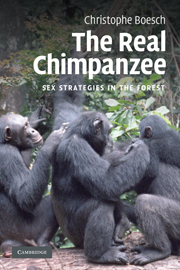Book contents
1 - Make love and war?
Published online by Cambridge University Press: 05 July 2015
Summary
Everyone is familiar with the hippy mantra ‘make love, not war’ an ideal that inspired a generation. Looking at the world and our past, however, it is make love and war rather than the ‘flower power’ ideal that seems to be the normal condition. Philosophers, such as Jean Jacques Rousseau and Thomas Hobbes, proposed that war is a natural state for humans resulting from the increasing competition in the growing human population following the advent of agriculture. Nowadays ‘make love and war’ seems to be the natural state for humans, whether it be in highly technically advanced and ‘sophisticated’ societies, such as those involved in the major regional wars of the twentieth century, or in less technically developed societies, like traditional hunter-gatherers, such as the Nuers and the Nimba of Sudan, the Australian Aborigines and the Batak of Asia or the Jivaro and the Yanomamö Indians of South America. Some traditional societies are constantly at war, while others have periods of relative peace, but it was shown that a state of war is characteristic of nearly 95% of all known human societies. When in our past did this situation start to prevail? What are the benefits of war? How did it happen that humans are so violent when at the same time showing so many cooperative and altruistic propensities? Do we see the same coexistence in chimpanzees? How can we learn from them to understand us?
I propose that by looking at our closest living relatives, the chimpanzees, our cousins of the forest, we can gain insight as to why altruism and aggression coexist in the same species. Knowledge acquired from other animal species can help us to improve the understanding of our own nature. The crucial point here is that in all communities of wild chimpanzees studied we saw from time to time extremely violent interactions with neighbours, and such conflicts can result in individuals being killed and groups annihilated.
- Type
- Chapter
- Information
- The Real ChimpanzeeSex Strategies in the Forest, pp. 1 - 10Publisher: Cambridge University PressPrint publication year: 2009

